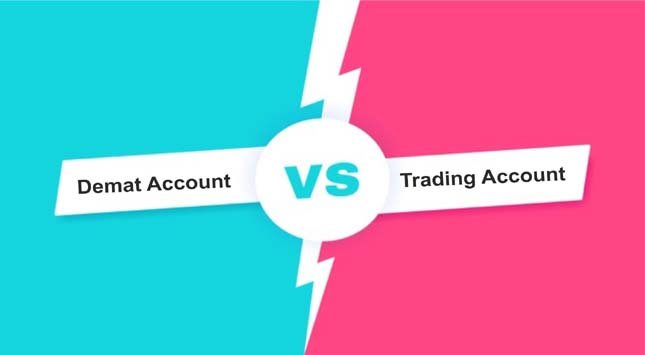Interested to invest money in the stock market? Are you aware of the basic requirements before you invest your money in the stock exchange? Well, the fundamental requirement for every investor is to have a Demat and Trading account.
But are Demat and Trading Accounts both similar? For beginners and even experienced traders, there is still a lot of confusion between the Demat Account and the Trading Account.
A Demat Account is one that holds the securities of an investor in dematerialized form. Whereas a Trading Account is one that acts as an intermediary between the Demat account of the investor and his/her savings bank account.
So, if you want to invest your money in the stock market, you must have both accounts. It is only then that you can sell or buy shares at your convenience from the market.
Nowadays, opening a Demat Account online is easy and most stockbrokers offer additional benefits at the time of online account opening.
Below are the details highlighting the difference between a Demat and a Trading Account:
1. Nature of the Accounts
When investors buy or sell shares, it is stored in the Demat Account. Between the Demat Account and the Bank Account, the Trading Account is the intermediary. It is through the Trading Account that these stocks are sold in the financial market. Simply put, a Demat Account is more like savings account for the shareholders, whereas a Trading Account is more like a current account for the number of shares purchased.
2. Functionality of the Accounts
A Demat Account helps to retain your shares and securities safely. It also helps in the conversion of securities when required from e-form to physical form. A Trading Account helps in selling and buying these securities.
So, if a trader wants to trade in options or futures, then he can do the same using a Trading Account, but if the trader wants to trade/invest in stocks then both the Accounts will be required.
3. Role of the Accounts in Trading
The investor purchases share through his Trading Account which is directly linked to his personal bank account. After purchasing, the shares are transferred to Demat Account. When the investor wants to sell the shares, the shares are taken from the Demat Account and sold in the stock market. The money is then transferred to the investor’s bank account.
You May Like to Read: Achieve Financial Freedom in Your Lifetime
4. Charges of the Accounts
An investor can legally have multiple Demat and Trading accounts using one PAN card but with different brokers. However, the investor has to pay maintenance charges on a yearly basis, if there are multiple Demat Accounts (whether all accounts are in use or not).
There are also charges levied for custodians and transaction fees. But for every trading account, there are no additional charges other than those charged during the opening of the accounts.
5. Measurement of the Accounts
The most significant and fundamental difference between the two accounts is that the Demat Account since it holds a record of the securities owned by an investor is always measured at a specific point in time. Like 31st of March every financial year.
However, in the case of a Trading Account, the transactions are measured over a period of time, like three months, six months, or a year.
An Investor would require a Demat Account to sell the shares, and a Trading Account to trade in Equities.
So, in spite of the nature of the difference between the two accounts, an Investor should hold both a Demat Account and a Trading Account.
You May Like to Read: Maximize Returns with a Portfolio Analyzer

